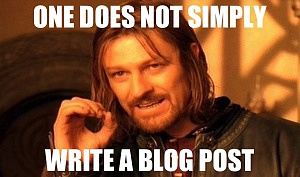Imagine getting an education in multiple facets of small business, while being surrounded by a sea of brilliant entrepreneurs. Pretty cool, right? Digital Marketer’s Traffic & Conversion Summit embodied this exact scene. Ryan Deiss, Perry Belcher, and a slew of other intelligent individuals enlightened the audience. One of the many awesome takeaways was that being high off of all the educational theory is good (which, I am), but the real work comes afterwards, when it’s time for implementation. Thanks to this summit, many of us are still high during the application of awesome practices, taking our “push” level from 110% to 500%.
One way to begin the push is to strengthen your content and commerce strategy. The core concept of this business model is using content to “attract customers who are more loyal and spend more money”, or monetizing it, at a basic level. The content and commerce model was recently thought to be new by some “experts”, who then said it was already waning shortly after. In the words of Belcher and Deiss, it wasn’t even being around long enough to be called a “fad”. However, this is nothing new, and is still very much in practice to this day. This model is there for a company to leverage, and can have an impact on the success of a business if done right.
As Deiss and Belcher pointed out, “it’s not about slapping a blog on a ecommerce site”.
When running an ecommerce business, you don’t simply post and expect amazing things to happen. Quality is important, and how you use this content is even more so. With effort and using data to your advantage, content and commerce can attract quality customers.
'Focus on the end buyer, the consumer' - @TheSharkDaymond #AgeOfTheCustomer #TCS2016 Click To TweetOne proven method is using the “fishbone” content model. Every bone should lead back to the head, or the main subject. If there is an extraneous bone with no purposeful function, cut it off.
“When information is cheap, attention becomes expensive”
Another discussion centered around a common theme — the target audience. Who are you marketing to? Who should you be marketing to? Ezra Firestone put it plainly: “What you do is market to people who are having collective experiences”. It is much easier to dig into the behavior of a community with common characteristics, than it is to identify the common behavior of small groups or individuals, as Belcher also highlighted in one of his presentations.
'The key to marketing is one hour per week' - @thegrowthguy #Marketing #TCS2016 Click To TweetHere are some other words of wisdom that we were privileged to take with us:
- It’s truly about your audience; it’s not about you.
- Get out of the way and serve your client.
- Your brand is not about you. Your brand is about what it can do for others.
- A good brand makes you feel good. A great brand makes you feel good about yourself.
- Affinity (a similarity of characteristics), not eyeballs. A bunch of eyeballs don’t belong to the same community.
- Longer content is great — the longer they scroll, the longer they stay around.
- Be customer centric, not product centric.
- If you really want to build a business, you need to be in a market that has size.
- Every successful enterprise starts with one successful offer.
I can go on and on about the amazing tidbits that were shared on stage, but I’ll sum it up by just recommending that everyone attends next year, especially if you haven’t before! There’s networking, influencers, knowledge, matter-of-fact takeaways and just the right amount of foul-mouthed humor. How can you say no to that? Get excited about your business, and get excited about business in general. I’ll see you next year at #TCS2017!





![9 Ways to Show Customers You Love Them [Infographic]](https://www.purechat.com/blog/wp-content/uploads/2016/02/infographic-vday-02.jpg)


